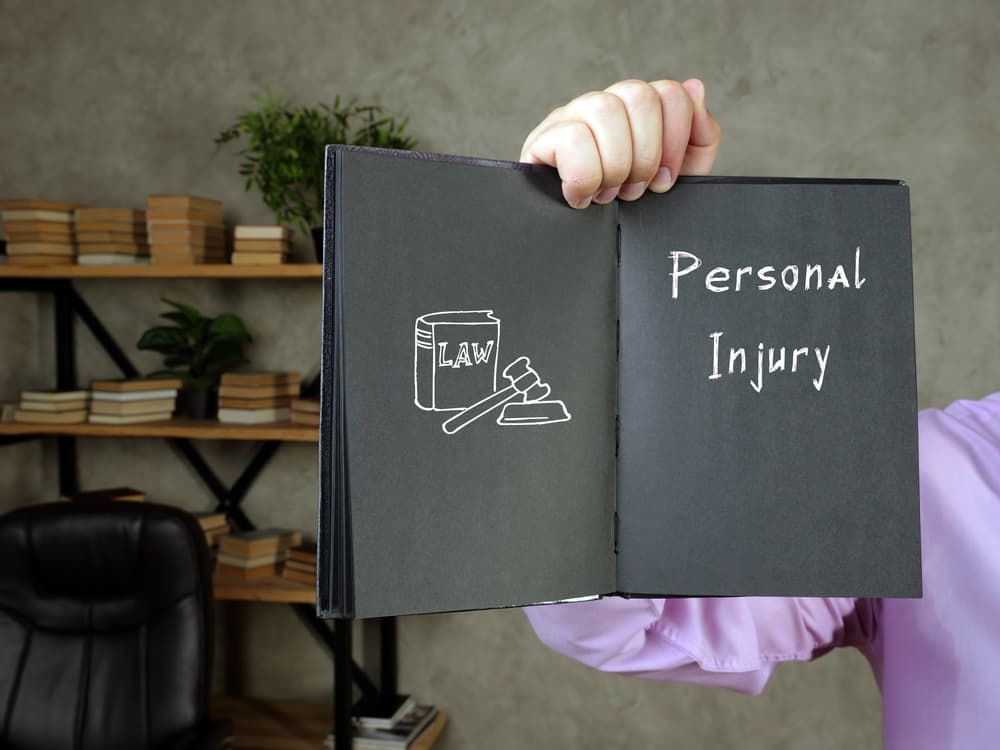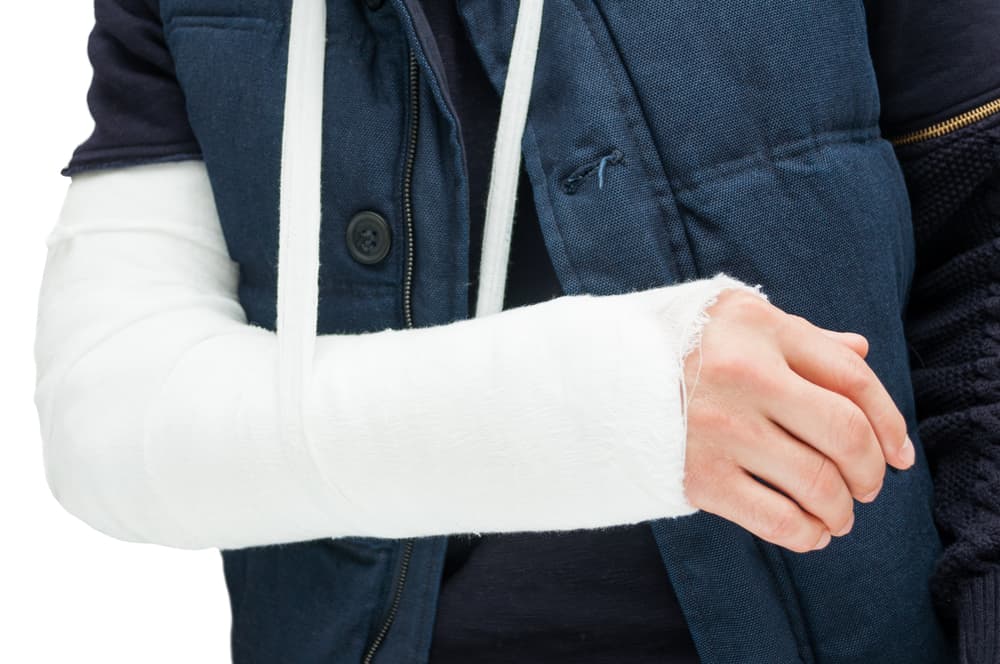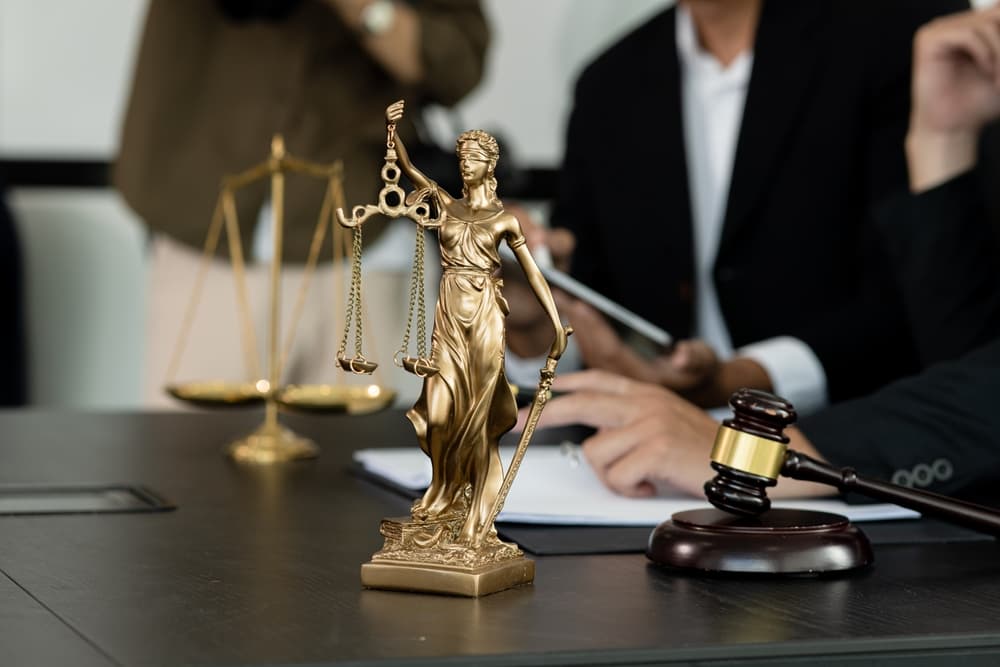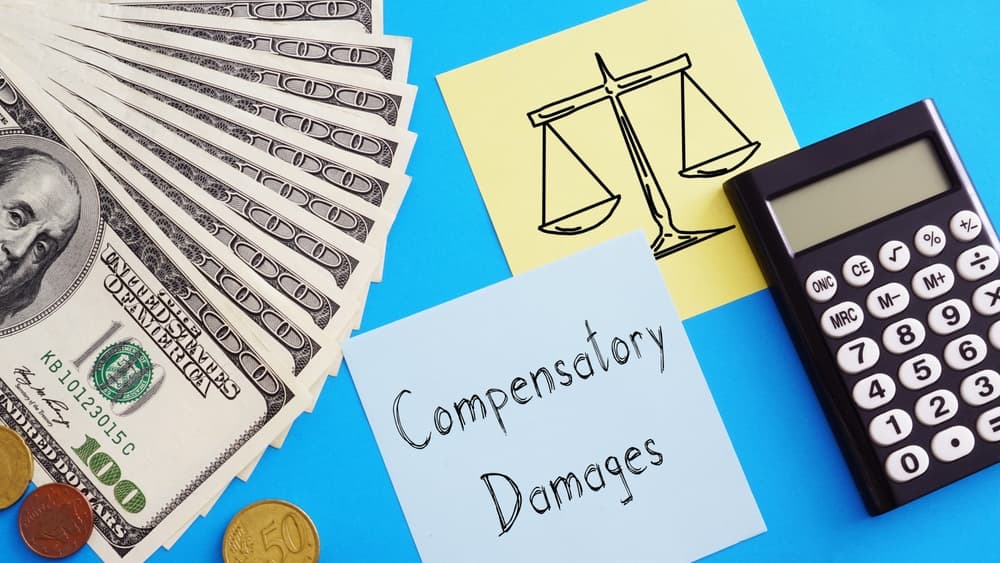Personal injury cases arise when individuals are involved in motor vehicle crashes and slip-and-falls that directly result from others’ negligence.
In most personal injury cases, the accident victim or lawyer brings a claim to the at-fault party’s insurance company. The amount of time it takes to settle a personal injury claim depends on various factors, including the complexity of the case, the seriousness of the victim’s injuries, and the parties’ willingness to settle.
A knowledgeable personal injury lawyer will work to expedite the process and pursue the full compensation you deserve in as little time as possible.
Common Personal Injury Matters

Motor vehicle crashes and slip-and-falls are two of the most common types of accidents that can lead to serious injuries, often because of someone else’s negligence. Negligence refers to when a person or entity fails to take reasonable care to avoid causing harm to others. In both motor vehicle accidents and slip-and-falls, there are several ways that negligence can play a role.
Motor Vehicle Crashes
Many motor vehicle accidents result from drivers failing to follow traffic laws or acting carelessly. Common examples of driver negligence include the following:
- Distracted Driving – One common cause of motor vehicle collisions is distracted driving, which can include anything from texting to eating while driving. When a driver’s attention is not fully on the road, they are more likely to cause a crash.
- Speeding – Another frequent cause of accidents is speeding. Drivers who go above the speed limit reduce their ability to stop quickly, increasing the likelihood of a collision.
- Drunk or Impaired Driving – Drunk or impaired driving is also a significant factor in crashes because alcohol and drugs can slow reaction times and impair judgment.
- Reckless Driving – Reckless driving, such as weaving in and out of traffic or tailgating, puts others at serious risk and can cause crashes.
Sometimes, crashes also result from poor road conditions, such as potholes or lack of signage, which is the responsibility of the government or other entities to maintain.
Slip-and-fall Accidents
Slip-and-fall accidents can happen when property owners fail to maintain safe environments for others. One of the most common causes is wet or slippery floors. If a store, restaurant, or other public place does not properly clean up spills or fails to warn people of a slippery floor, they may be liable for any resulting injuries. Uneven surfaces, such as broken or cracked sidewalks, are also hazardous. Inadequate lighting can also lead to accidents since it may prevent people from seeing obstacles in their path. Finally, cluttered walkways or improperly maintained stairs can cause someone to trip and fall, leading to severe injuries.
Common Injuries That Accident Victims Suffer
Victims of motor vehicle crashes and slip-and-falls often suffer a range of physical and mental injuries. These injuries can be life-changing and are often due to someone else’s negligence. The effects of these injuries may be long-lasting, and in many cases, victims can seek compensation to help cover lost income and other damages.
Physical Injuries

In both motor vehicle crashes and slip-and-falls, some of the most common physical injuries include broken bones. Car accidents can exert significant force on the body, causing fractures in the arms, legs, ribs, and other bones. slip-and-falls can also result in fractures, particularly to the wrists or hips, as victims try to break their fall.
Whiplash is another common injury, particularly in car accidents. Whiplash occurs when the head and neck jolt suddenly, leading to neck strain or even damage to the spine. Spinal injuries can range from pain to more serious issues, such as herniated discs, which may cause long-term pain and limited mobility.
Head injuries are also frequent in both types of accidents. Concussions and other traumatic brain injuries (TBIs) can result when a victim’s head strikes a hard surface. These injuries can cause memory loss, headaches, and difficulty concentrating. In severe cases, TBIs can have lifelong consequences, affecting a person’s ability to work or function independently.
In motor vehicle crashes, internal injuries are common as well. The strong force of a collision can damage internal organs, leading to life-threatening conditions like internal bleeding.
Mental Injuries
Along with physical injuries, victims of motor vehicle crashes and slip-and-falls may experience serious mental health issues. One of the most common is post-traumatic stress disorder (PTSD). Following a traumatic event, victims may have flashbacks, nightmares, or anxiety related to the accident.
Depression is another common mental health issue that can arise following a serious accident. The pain and physical limitations the injuries cause can lead to feelings of hopelessness or despair. Victims may also develop anxiety disorders, which can prevent them from driving, walking in certain areas, or feeling safe in similar situations again.
Both the physical and mental injuries from these accidents can have long-lasting effects on victims’ lives, requiring extensive medical care and emotional support.
Factors That Determine How Long It Takes To Settle a Personal Injury Case
The amount of time necessary to settle a personal injury case involving a motor vehicle collision or slip-and-fall accident can vary widely. Several factors influence how long the process will take, including all of the following:
- Severity of Injuries – One of the most significant factors in determining how long a personal injury case will take to settle is the severity of the injuries involved. Cases with less severe injuries may settle faster, as both parties may quickly agree on an amount of compensation. However, more involved injuries can take longer because the full extent of the injuries may not be immediately known. It is important to wait until the victim’s medical condition stabilizes before finalizing a settlement to ensure that all future effects of the injury are considered.
- Liability Disputes – A dispute over who is at fault for the accident can significantly delay settlement negotiations. For example, in a motor vehicle collision, if both drivers claim the other is responsible, it may take time to gather evidence, such as witness statements or traffic camera footage, in order to prove fault. In a slip-and-fall case, the property owner may argue that the victim was careless or did not use reasonable caution. Resolving these liability issues can add months or even years to a case, depending on the complexity of the situation.
- Insurance Company Delays – Insurance companies often play a major role in how quickly a case settles. While some insurance companies may move swiftly to avoid the cost of a trial, others may deliberately delay the process in the hopes of reducing the final settlement amount. They may request additional documents, prolong negotiations, or dispute certain details of the case, which can cause delays that lengthen the settlement timeline.
- Legal Process – Sometimes, the legal process can slow down the case. If the case goes to court, the timeline can extend significantly due to court scheduling, pretrial motions, and depositions. Even if the case does not go to trial, both sides may engage in lengthy negotiations or mediation to reach a fair settlement. These steps can add several months to the overall process.
- Willingness to Settle – Finally, the willingness of both parties to settle plays a big role in how long the case will take. If one party refuses to agree to a reasonable settlement amount, negotiations can drag on, and the case may even go to trial, adding a significant amount of time to the process.
Personal Injury Litigation Options

When pursuing a personal injury case following a motor vehicle crash or slip-and-fall accident, there are several key litigation options. These options can influence how long the case takes and how much compensation the victim may receive. The most important options include settling the case, taking it to trial, or using alternative dispute resolution methods like arbitration or mediation.
Settling the Case
Settling a case is the most common option in personal injury claims. In a settlement, both parties agree on a compensation amount without going to court. Settlements can happen at any point during the litigation process, even before a lawsuit is officially filed. Many people choose to settle because it is often quicker and less stressful than going to trial. Both sides avoid the risk of losing in court and save on legal fees. However, one drawback is that the settlement amount may be lower than what can potentially be awarded in a trial. Settling allows the accident victim to receive compensation sooner, but it requires both sides to agree on a fair amount.
Taking the Case to Trial
If the parties cannot reach a settlement, the case may go to trial. This option involves presenting the case before a judge or jury, who will decide the outcome based on the evidence. Going to trial can be beneficial if the at-fault party’s insurance company refuses to offer a fair settlement, as a judge or jury may award a higher amount than what was originally offered. However, taking a case to trial can sometimes be risky, time-consuming, and expensive. There is always the chance that the judge or jury may find against the accident victim, in which case they will not receive any compensation.
Alternative Dispute Resolution (ADR)
Alternative dispute resolution, such as arbitration or mediation, offers another option for resolving personal injury cases. In mediation, a neutral mediator helps both parties reach a mutually acceptable agreement. It is less formal than a trial and allows both sides more control over the outcome. Arbitration, on the other hand, involves a neutral arbitrator who listens to both sides and makes a binding decision. ADR can save time and money compared to going to trial, but it may limit the victim’s ability to appeal the decision.
Recoverable Damages for Personal Injuries

In motor vehicle accidents and slip-and-fall cases, victims may be entitled to compensation for losses, or damages – to cover the harm they have suffered. These damages aim to make the victim “whole” again and address different aspects of the injury. Some types of damages are financial, while others compensate for emotional or personal losses. Here are the most common types of recoverable damages in a personal injury case:
- Loss of Earning Capacity – If an injury from an accident affects the victim’s ability to work or perform at the same level in the future, they may be compensated for the loss of earning capacity. This damage accounts for the future income they can no longer earn due to their injury. For instance, if a person is left unable to do a physically demanding job because of their injury, they can seek damages for their reduced earning potential.
- Pain and Suffering – Pain and suffering damages compensate victims for the physical and emotional pain they endure as a direct result of the injuries they suffered, including long-term physical pain, discomfort from recovery, and mental anguish. Since pain and suffering do not have a direct dollar amount, they are often calculated based on the severity of the injury and the effect on the victim’s life.
- Inconvenience – Inconvenience damages cover the disruptions resulting from the injury, such as having to attend medical appointments, needing assistance with daily activities, or the hassle of adjusting to new limitations. These damages address the practical difficulties that result from being injured.
- Lost Income – Victims of accidents may also miss work due to their injuries. Lost earnings compensate for the income they would have earned during this time, which includes pay for the days or weeks missed while recovering.
- Emotional Distress – Emotional distress damages compensate victims for the psychological repercussions of the accident, including anxiety, depression, or fear resulting from the trauma of the incident.
- Mental Anguish – Mental anguish refers to the severe emotional suffering that may accompany serious injuries. It goes beyond emotional distress, encompassing feelings of hopelessness, humiliation, or extreme grief.
- Loss of Enjoyment of Life – If an injury prevents a victim from participating in activities they once enjoyed, they may be compensated for loss of life enjoyment, including hobbies, exercise, or social activities.
- Loss of Consortium – Loss of consortium damages are awarded when the victim’s injury negatively affects their relationship with a spouse or family members, such as losing companionship or intimacy.
- Punitive Damages – Punitive damages are awarded in cases where the at-fault party’s behavior was especially reckless or malicious. These damages aim to punish the wrongdoer and deter others from similar conduct.
Talk with an Experienced Personal Injury Lawyer Today
If you sustained injuries in a recent motor vehicle crash or slip-and-fall, a knowledgeable personal injury lawyer can handle every step of your case for you. They will work hard to maximize the compensation you recover and expedite the process as much as possible.
